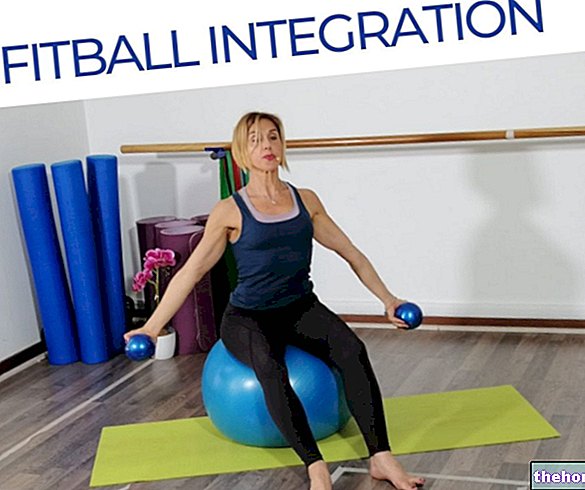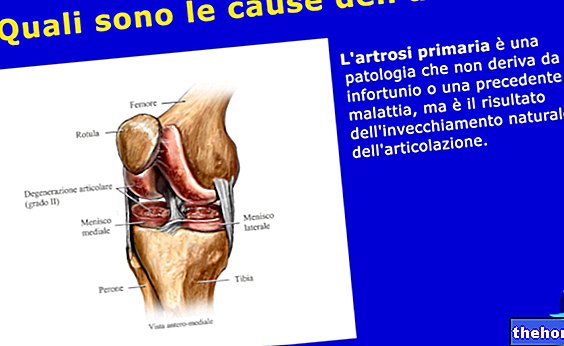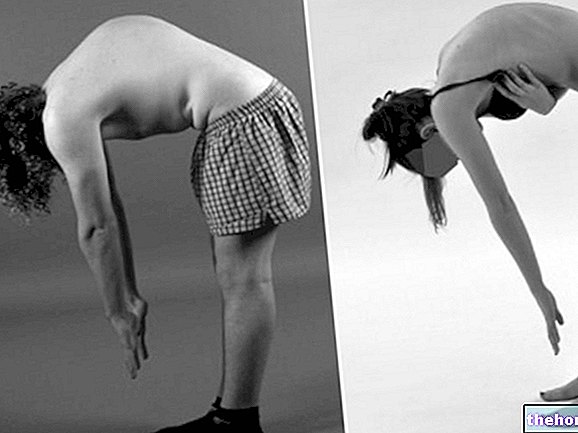an ergonomic approach
Edited by Dr. Giovanni Chetta
The foot, in its role as an "antigravity base", first makes contact with the support surface, adapting to it by releasing it, then stiffens, becoming a lever to "reject" the surface itself. The foot must therefore alternate the condition of relaxation with the condition of stiffening. The alternation of laxity-rigidity justifies the analogy with the variable pitch propeller. The rear foot and forefoot are arranged in planes that intersect in a variable manner. In the ideal condition, the rear foot is arranged vertically and the forefoot horizontally (on a horizontal support surface). When the foot is under load, the torsion between the rear foot and the forefoot is attenuated in relaxation (the foot becomes a modeling platform) and is accentuated in the stiffening (the foot becomes a lever). The arched arrangement is actually apparent, being an expression of the degree of winding of the breech helix. The foot therefore does not have the meaning of a real but apparent arch or vault, which rises during the winding and lowers during the unwinding of the helix. The winding of the helix, with the consequent accentuation of the apparent arc arrangement, corresponds to its stiffening. The unwinding of the helix, with consequent attenuation of the apparent arc, is the relaxation.
The torsion of the breech helix is connected to the external rotation of the suprapodalic segments (leg and femur). The talus, rotating outwardly integrally with the leg bones, rises on the calcaneus thus closing the mid-tarsal joint; the rear foot becomes vertical. The forefoot adhering tenaciously to the ground reacts to the torsional forces applied on the rear foot; the foot is therefore stiffened.
The talus is a bone with which no muscle directly relates (it has no muscle insertions), it moves as a result of the forces transmitted by the adjacent bones. rotations on the sagittal plane (flexion-extension) and is the bone of the leg as it is solidarized with the tibia and fibula, by means of the bimalleolar forceps, in the rotations of the suprapodalic segments on the transverse plane (intra-external rotation).
The human body is a unstable equilibrium system; the height of the center of gravity (ideally anterior to the third lumbar vertebra) with respect to a narrow base and the structure made up of a succession of articulated segments are factors of instability. Only a vigilant control (postural tonic system) can succeed in this condition , to seek stable dynamic equilibrium in the upright position and unstable dynamic equilibrium during locomotion (which allows the transformation of potential energy into kinetic energy). This happens above all thanks to an information service (skin exteroceptors and proprioceptors) so precise and timely as to allow very valid responses with energetically economical interventions (not detectable electromyographically) by muscles with a prevalence of red fibers. This is the most important information event as it gives man the privilege of adapting to the most varied environmental conditions.
Man's bipodal walking is thus conditioned by the lifting of the center of gravity and by the smallness of the support base, compared to quadrupedal movement. It is a complex act resulting from the interactions between internal and external forces directed by an admirable system of postural control and "balance, which regulates moment by moment, through the muscles, the relationships between forces. Most of the muscle groups of the lower limbs are active during walking (the lower limb has 29 degrees of freedom of movement, corresponding to 48 muscles).
Human locomotion is a combination of rhythmic forward propulsion and elevation of the body above. The body center of gravity in walking has a sinusoidal trend on the sagittal plane reaching the lowest point in the double support (bipodalic) and the maximum height in monopodalic support, with an excursion of 4-5 cm. From a strictly mechanical point of view, the progression of the body in space is the result of the combination of joint rotations. Just as the circular movements of the wheels result in the forward movement of the vehicle, rotational movements (partial circles) of the limbs or parts of them result in the forward movement of the whole body. Thanks to the high positioning of the body's center of gravity, the acceleration of our body is essentially of gravitational genesis (potential energy that is transformed into kinetic energy). Only to a modest extent do accelerating muscle contractions come into play and this is the reason for the fact that the " man can go on his way for a very long time. In fact, it can be said that in walking, muscular work is required only in the periodic ascent of the center of gravity.
The walking cycle it is included between the two calcaneal supports of the same foot and consists of a load-bearing phase and an oscillating phase.
Load-bearing phase
- Heel support (reception)
When the heel comes into contact with the support surface (reception), the helix releases to allow the laxity of the foot to cushion the weight of the body and to adapt to the surface itself. To this end, the lower limb rotates internally, the " The astragalus, integral with it, therefore also rotates internally (supinating), the calcaneus prone, rotating externally. The assumption of weight by the foot is gradual and is maximum when the gravity line falls in the center of the breech surface. - Full support (contact)
When the entire plantar surface is in contact with the surface, the internal rotation of the limb is abruptly transformed into external rotation. This triggers the mechanism based on the sub-talar joint. Following the rotation of the limb, the talus rotates on the transverse plane externally (for about 12 ° on average) pronating and rising above the calcaneus (away from the calcaneus-scaphoid-plantar ligament). In turn, the calcaneus rotates internally, supinating around the "compromise axis" ("momentary" axis around which the process of pronation-supination of the a takes place: the hindfoot becomes vertical by means of the reciprocal talus-calcaneal screwing.
The cuboid, tenaciously connected to the calcaneus, migrates plantarly assuming "on its shoulders" the series of cuneiforms.
The forefoot is arranged in rotational contrast with the hindfoot for the reaction to the ground. In this way there is the "wrapping of the breech propeller and the consequent" arching "of the foot: the mid-tarsal joint is blocked and there is the simultaneous passage of the weight on the IV and V metatarsus for eversion of the forefoot not yet rigid.
The peroneal muscle (long peroneal) draws the head of the first metatarsal into contact with the ground, carrying out a stabilization work so that the weight is now distributed on all the metatarsal heads (metatarsal fan); the foot transforms from propeller into rigid "lever bar". - Digital support (propulsion)
The heel lifts off the ground. The fingers, after adapting tenaciously to the support surface, flex dorsally. This causes the plantar aponeurosis to shorten, tensing by approx. 1 cm (the digitations of the plantar aponeurosis reach the corresponding basal phalanges, connecting to the periosteum, in the segments adjacent to the joints) triggering the mechanism of the winch that completes the intrapodalic cohesion.
The body's center of gravity migrates ventrally and the body starts to fall forward. The intervention of muscular control, in particular of the sural triceps muscle, formed by gastrocnemius and soleus (in addition to the anterior tibial, posterior tibial, peroneal long and dorsal flexors) and timely contralateral contact, exert a brake action.
In the propulsive phase, the forces acting on the foot are equal to 3-4 times the weight of the body. In a situation of correct physiology, the foot behaves like a helix in such a way that the projection on the ground of the body's center of gravity remains mostly centered, ie it passes along its own axis, which corresponds to "approximately"breech axis, axis passing centrally to the rear foot and in the center between the second and third finger.
Oscillating phase
The oscillating phase represents the providential preparation for the load-bearing phase. The internal rotation of the limb, around the mechanical axis, which begins in this phase, is an indispensable premise for the subsequent external rotation. It is thanks to this alternation of rotations that potential energy is transformed in the human body into kinetic energy. The oscillating and bearing phases are therefore related to the continuity of the progression. The breech pendulum is actually a bearing pendulum. The neuro-muscular complex watches over this reciprocal handover by stabilizing, modulating and characterizing it as a typical expression of individuality.
At birth the nervous circuits predisposed to walking are already present, however, in order to allow adequate and indispensable musculoskeletal development, they are temporarily inhibited by the higher centers. Posture as a voluntary act thus becomes a maturation and learning phenomenon. Approximately one year of walking, first learned and then automated walking begins.Only at around two years of age, following the development of the relative structures, the automatic control is efficient.
It is therefore in the transverse plane that modern biomechanics has identified the priority spatial element in the statics and dynamics of man. In fact, it is from the rotation in the transverse plane that the antigravity mechanism is triggered, which allows the center of gravity to migrate upwards. . The height of the center of gravity loads the system with potential energy, that is instability which, however, as I said, is transformed into indispensable kinetic energy in the dynamics, thus allowing progression in space with a modest consumption of muscular energy.
The joints in which the movement takes place in the transverse plane are, with a closed kinetic chain, the coxofemoral and subtalar. In particular, the coxofemoral joint and the talus-scaphoid joint are analogically structured and correspondingly arranged. The essential movements in antigravity mechanics of the hip are extension and concomitant external rotation. In the transfer from flexion to extension, the femur then rotates outwards, reflecting itself in the breech release-stiffening mechanism. This is therefore an anatomical-functional condition that favors our antigravity.
The analysis of the morphological and functional characteristics of the lower limb relative to the transverse plane opens a large chapter of structural pathology which contemplates the anomalies of femoral-tibial rotation and the repercussions on breech function and vice versa. In this way, a robust bridge is thrown that increasingly connects the foot to the overlying body segments, in particular, with the pelvic girdle, with the scapulo-humeral girdle, with the cervico-occipital hinge up to the temporomandibular joint, in the context of biomechanics and patho-mechanical.
Other articles on "Posture and Wellness - Importance of" Plantar Support "
- Posture and Wellness - Foot and Posture
- Posture
- Posture and well-being - Incorrect Podalic Support
- Posture and well-being - Functional Scoliosis
- Posture and well-being - Organic dysfunctions of postural origin
- Posture and well-being - Postural examination and re-education
- Posture and well-being





























